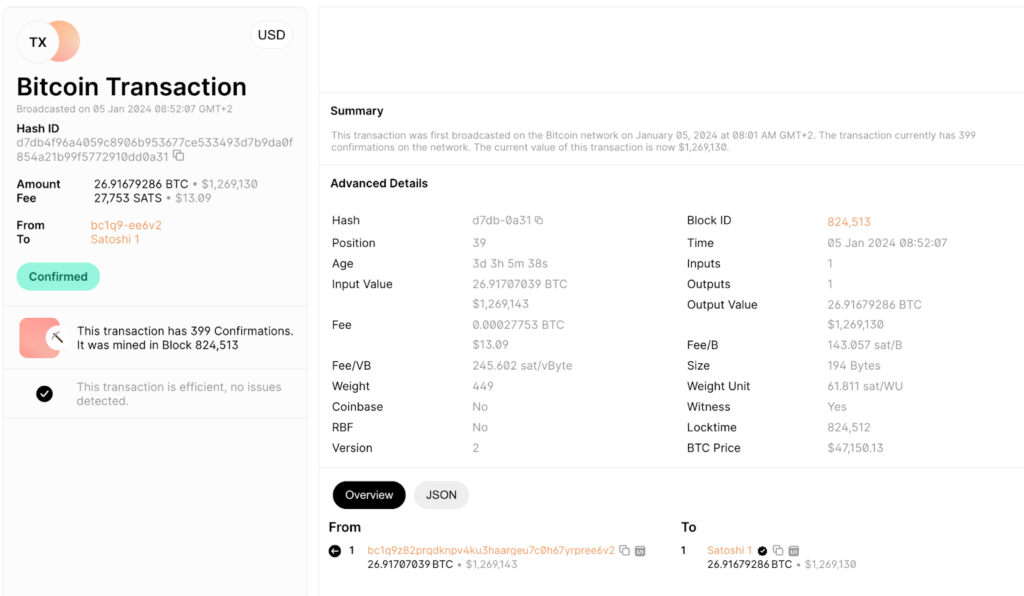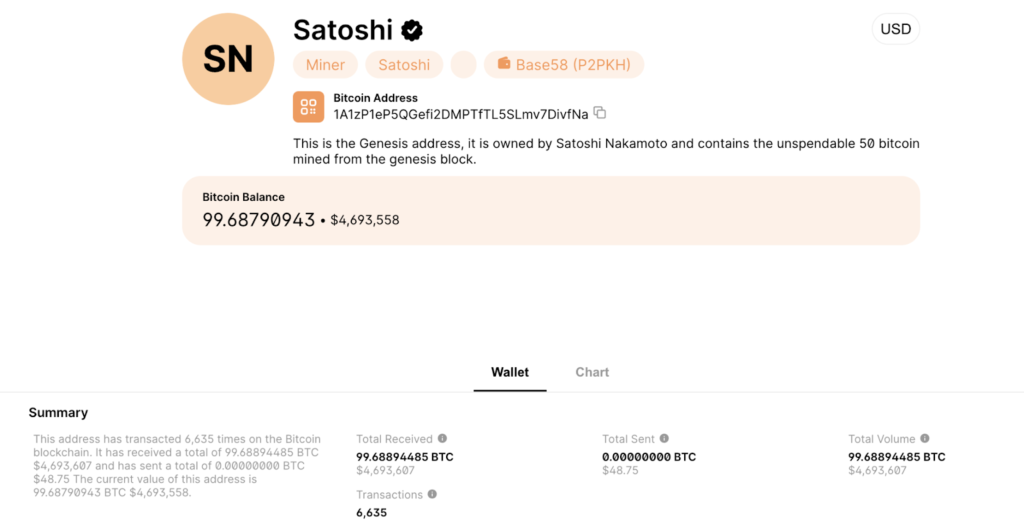In a puzzling move, an unidentified individual has spent approximately $64,000 to record nearly 9 megabytes of encrypted data on the Bitcoin blockchain. Spanning over 332 transactions, with fees varying from $14 to $2,500 in Bitcoin’s smallest unit, satoshis, the purpose behind this enigmatic activity remains shrouded in mystery.
Recently, someone spent around $64,000 (about 1.5 BTC) to add almost 9 megabytes of complex computer data to the Bitcoin network.
The mystery of the 2024 Bitcoin data inscription
A report from Ord.io, a digital data tracker, revealed that over 1 Bitcoin was used to make 332 separate entries on January 6th.
These entries contain complex data. But right now, no one knows what this data means.
Someone even tried to figure it out using ChatGPT, a smart computer program, but they couldn’t solve the mystery.
As you can imagine, there is a lot of curiosity about who actually added this data.
The Bitcoin address linked to these mysterious additions is listed as “Unnamed” on Ord.io. The data itself is a mix of English, Greek, and mathematical symbols.
Interestingly, among the 332 entries, two feature a digital image of a pepperoni pizza.
According to Ord.io, this signifies that the entries include some of the 10,000 Bitcoins once used by early Bitcoin enthusiast Laszlo Hanyecz to buy two Papa John’s pepperoni pizzas on May 22, 2010.
This puzzling event of inscribing data occurred just a day after a massive 26.9 Bitcoins, valued at $1.17 million, were transferred to the very first Bitcoin wallet, known as the Genesis wallet, on January 5.
What is Bitcoin blockchain inscription?
Imagine the Bitcoin blockchain as a digital ledger or a record book.
Normally, this ledger keeps track of Bitcoin transactions – who sends and who receives Bitcoins.
An inscription on the Bitcoin blockchain is like writing a note in the margins of this ledger. Instead of recording a transaction, you’re adding extra information.
How is it different from typical transactions?
A standard Bitcoin transaction is like saying, “I give 5 Bitcoins to Alice.”
An inscription adds more: “I give 5 Bitcoins to Alice. P.S. Here’s a recipe for apple pie.” This ‘recipe’ is the extra data you’re inscribing.
This extra data doesn’t affect the transaction’s main purpose (sending Bitcoins), but it permanently records additional information.
Why inscribe data on the blockchain?
- Permanence. Once something is written on the Bitcoin blockchain, it can’t be changed or deleted. It’s like carving into stone.
- Visibility. Everyone who can see the ledger can see your inscription. It’s a public display.
- Proof of existence. Inscribing data can prove that a certain piece of information existed at a certain time. For instance, if you inscribe a unique digital artwork, you’re showing that it existed at the time of the inscription.
- Security. The blockchain’s secure nature makes it a trustworthy place to store important data.
The process of a Bitcoin blockchain inscription
- You create a Bitcoin transaction.
- Along with the transaction details (like sender, receiver, and amount), you include your extra piece of information – your ‘note.’
- You send this transaction to the blockchain.
- Miners on the Bitcoin network confirm the transaction and add it to a block.
- Once added to a block, your inscription is permanent and visible to anyone who looks at the blockchain.
26.917 BTC transaction to Genesis Wallet
On January 5, at 1:52 am Eastern Time, an anonymous Bitcoin user made a notable transaction, sending 26.917 Bitcoins, valued at $1.17 million, to Bitcoin’s first-ever wallet, the genesis wallet (1A1zP1eP5QGefi2DMPTfTL5SLmv7DivfNa).

Source: Blockchain.com
This wallet is historically significant, as it was set up by Satoshi Nakamoto, the elusive creator of Bitcoin.
The transaction was unique for several reasons.
Firstly, the amount was transferred from a wallet that had been emptied specifically for this purpose. The transaction fee was $100, which is considerably higher than the average fee.
Secondly, the funds were moved in a complex manner, involving three wallets initially and then dispersing to 12 others.
Notably, a large portion of these funds was traced back to a wallet associated with Binance, a major cryptocurrency exchange, as identified by Arkham Intelligence, a blockchain analytics platform.
Coinbase director Conor Grogan commented on the transaction, speculating on two possibilities: either this was an action taken by Nakamoto himself, moving Bitcoins from Binance, or it was someone else making a dramatic gesture by effectively ‘burning’ over $1 million. Grogan also raised the possibility of this being part of an unusual Bitcoin exchange-traded fund marketing campaign.
It’s important to note that there has been no movement of funds from wallets associated with Nakamoto, including the genesis wallet, since Nakamoto’s disappearance in December 2010.
However, it’s speculated that Nakamoto could still possess the private keys to these wallets and control the funds within.
The genesis wallet initially contained 50 Bitcoins mined by Nakamoto.
By the end of 2023, on the occasion of Bitcoin’s 14th birthday, the global Bitcoin community had added to this wallet’s balance, bringing it up to 72 Bitcoins through various celebratory contributions.

Source: Blockchain.com
With this latest transaction, the wallet’s balance has now reached 99.68 Bitcoins, which are estimated to be worth about $4.69 million.

